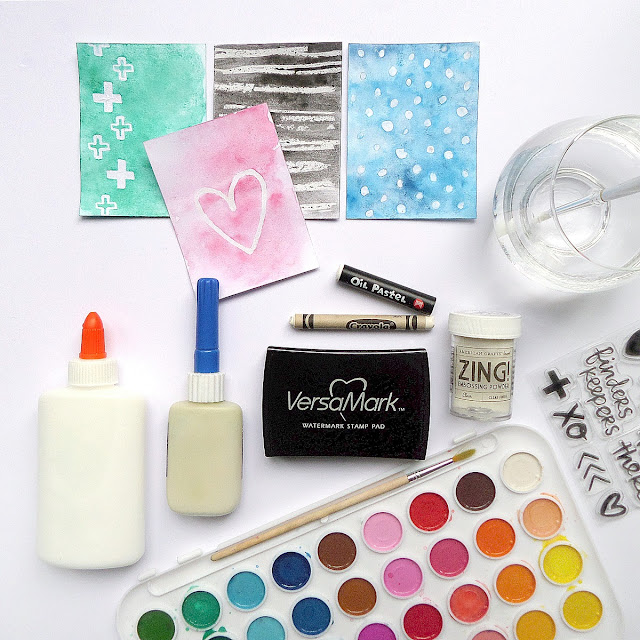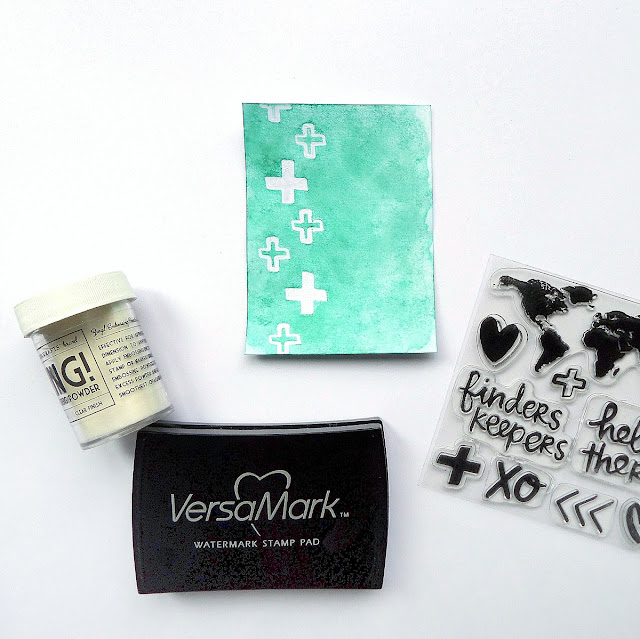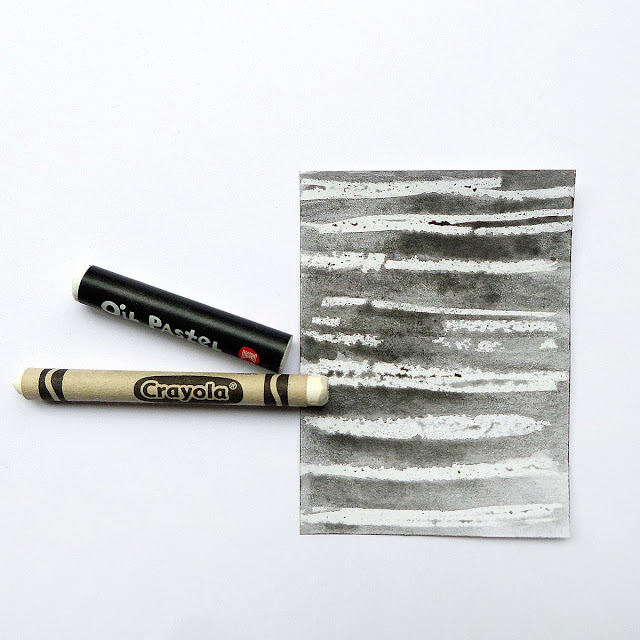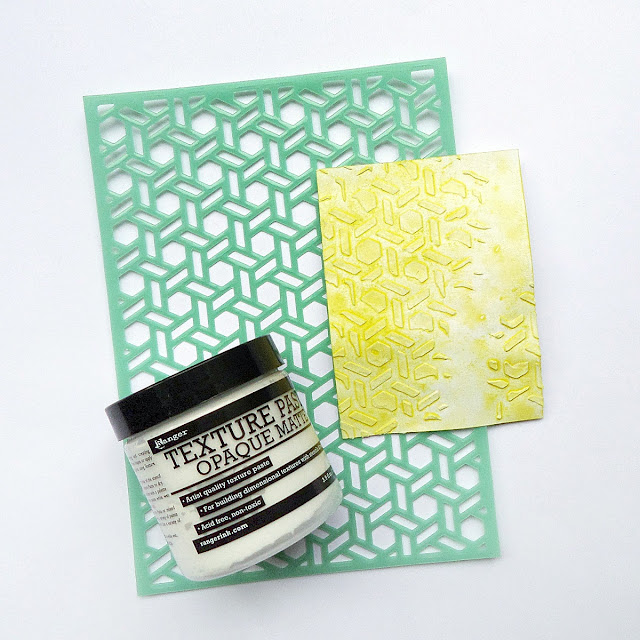Agnus | watercolour resist
Posted by Agnus K on
Before we look at the different resist methods it is important to note that you should not use an iron or laminator to straighten out the cardstock with these techniques as the resist products may react to the heat. If your card needs flattening after painting, place it between a heavy book overnight instead.
I have again used simple white cardstock to create my filler cards and used the 'wet on wet' method I went over in my last post to apply the watercolour paint. The most common method to create a resist involves stamping with clear/white ink onto the background followed by heat setting clear/white embossing powder over the stamped image. This method will produce clean results, however it does leave the stamped area with a sheen.
Masking fluid is another great way to achieve a resist (the brand I have used is different to what we have in store but they act in the exact same way). The fine tip on the bottle allows you to control the flow of the resist medium to produce a variety of free hand images or words for a fun custom look. The fluid is tinted so you can see where you have applied it, and you need to make sure it is dry before adding the watercolour over the top. The key with this method is to allow the masking fluid to fully dry before attempting to remove it otherwise it will pull up the paper beneath it. Once the masking fluid has been peeled off the paper beneath remains in it's original state without any sheen.
Similar to the stamping/embossing method, you can also use a white craft/pva glue to apply a resist to your project. Because of the nature of the glue the image will contract as it dries, so the results will not be as crisp as the embossing method - however it works well for simple organic shapes.
I highly recommend using an old paint brush to do this and to rinse it clean once finished.
One of the oldest and most simple methods involves a simple white crayon or oil pastel - remember doing that when you were a child? This method is great when going for an arty look, however the coverage often varies depending on how much pressure you use in the application.
Although this card did not make the final cut - I also tried using texture paste with a stencil as a resist and while it did produce a fun result the paste did not resist the waterolour and in fact seemed to absorb it, creating more intense colour over the paste.
Products from the Sassy store...








Thanks for stopping by xx







